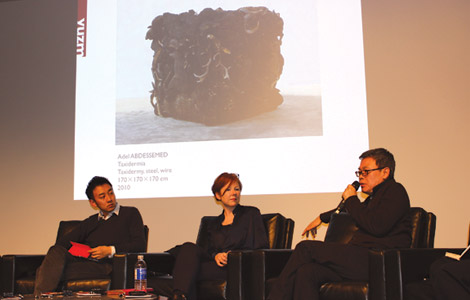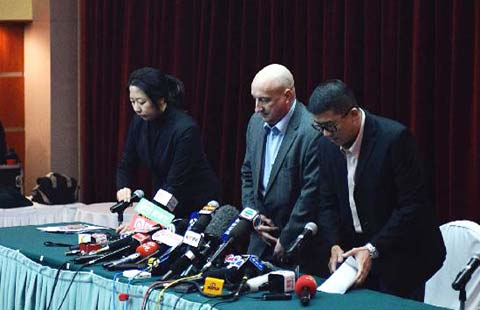Beijing seeks ways to relieve congestion
Updated: 2014-03-11 07:31
(China Daily USA)
|
||||||||

Broad view | Ian Morrison
China was once synonymous with bicycles. Now, roads on which two wheels previously reigned supreme have become the domain of the motorist.
The nation assumed the mantle of the world's "car kingdom" in 2009, when it officially overtook the United States to become the world's largest car market, and in 2013 it became the first country whose annual automobile sales exceeded 20 million units - almost 22 million passenger and commercial vehicles were sold in the nation in the year, an increase of 14 percent year-on-year.
Car ownership can be a great thing, giving people greater freedom to choose where and when they want to travel, and it can help urban dwellers live in greener and more pleasant surroundings by giving them the ability to become commuters.
There are now more than 5.3 million cars on the road in Beijing, a city of around 20 million people, with the consequent congestion, traffic jams and contribution to air pollution.
A major problem in Beijing is the overall design of the city, as urban planners drew up the blueprints for many of the city's major roads and housing areas back in the 1990s, or even the 1980s, when private car ownership in China was at best a pipe dream for the vast majority of the population.
A study by experts at the China Academy of Transportation Sciences and the Beijing Municipal Transport Commission in 2010 on the impact of car use restrictions in Beijing found that cars occupied 77 percent of the city's road network.
These experts concluded that road construction would be unable to match the growth in car ownership, a statement which has been borne out in the subsequent years by the harsh reality of the city's major ring roads turning into virtual parking lots during rush hours.
To stop this situation from getting any worse, the Beijing municipal government mapped out proposals late last year to curb car ownership at under 6 million vehicles by 2017 - taking 1 million old vehicles off the road and replacing them with new and more energy-efficient ones, and cutting diesel and gasoline use by 5 percent.
Achieving this target will obviously require a continuation of the license plate lottery introduced in the city in 2011, but this will only serve to cut Beijing's growth in car ownership, rather than cut the actual number of vehicles currently on the road.
The 2010 study offers some important food for thought on the way ahead, as it compares the impact of Beijing's end-number license plate policy, which keeps cars off the road on a given day of the week, with the odd-even license plate policy enforced during the 2008 Beijing Olympic Games, which, while it was in force, resulted in the following:
A 22.5 percent decline in traffic volume;
An increase of average road speed by 6.7 km/h;
A 53.1 percent fall in accidents reported to police;
A 45.5 percent rise in rail passengers;
However, a reintroduction of the odd-even license plate policy would also require a further, and major, expansion of Beijing's already extensive public transport network. To this end, the municipal government is taking steps to ensure that more than half of all journeys in the city center will be made on public transport by 2017.
China could also take a leaf out of London's book, where a congestion charge has been in force since 2003. The funds raised from such a charge - in London around 169 million pounds ($281 million) annually - could help improve Beijing's public transport system, which would encourage more commuters to leave their cars at home and instead hop on the bus or the subway.
But the best, cleanest and healthiest solution would be the restoration of the "bicycle kingdom", with the promotion of a form of transport offering good exercise and a zero carbon footprint.
Beijing Municipal Transport Commission is keen to get more of the city's residents back on bicycles, with the number of public-rental bicycles in the city set to rise from 2,000 in 2013 to 50,000 next year.
(China Daily USA 03/11/2014 page7)
Most Viewed
Editor's Picks

|

|

|

|

|

|
Today's Top News
FBI check thumbprints of impostors on missing jet
Probe finds scant evidence of attack
Obama to meet Ukrainian PM on Wed
Families of jet passengers arrive in Malaysia
Japan urged to handle historical issues
Questions abound as the mystery deepens
IBM fires 19 in labor dispute
Search widens for lost air carrier Boeing 777
US Weekly

|

|














